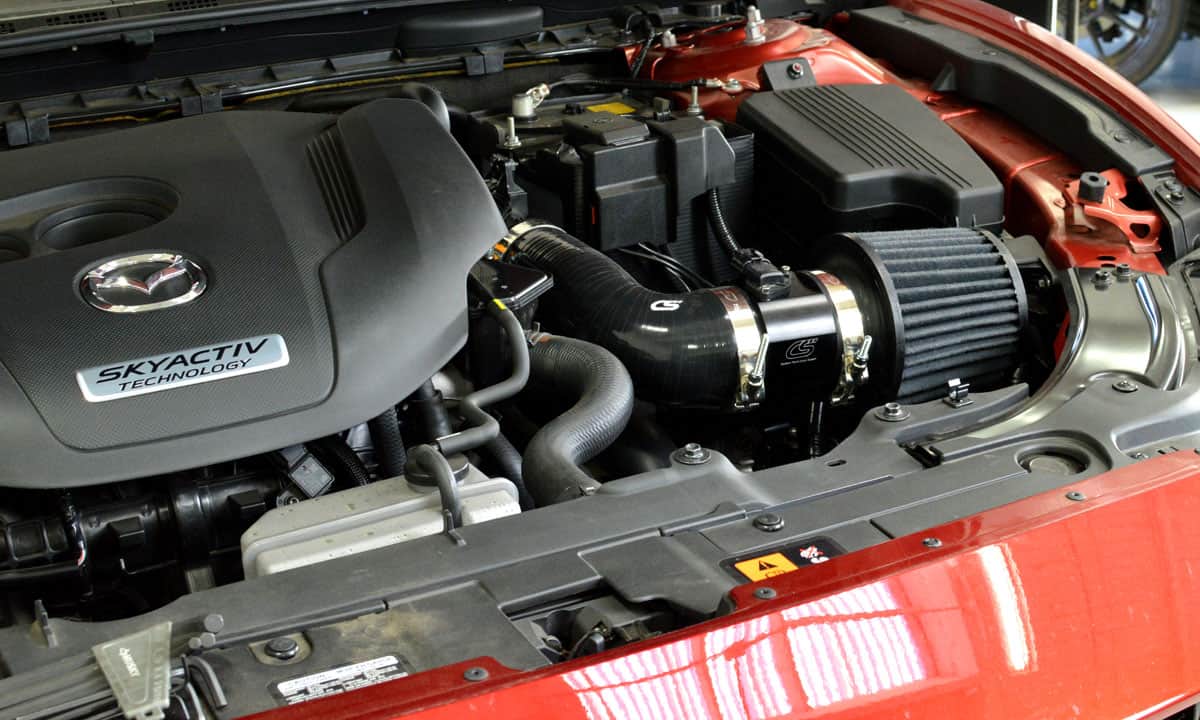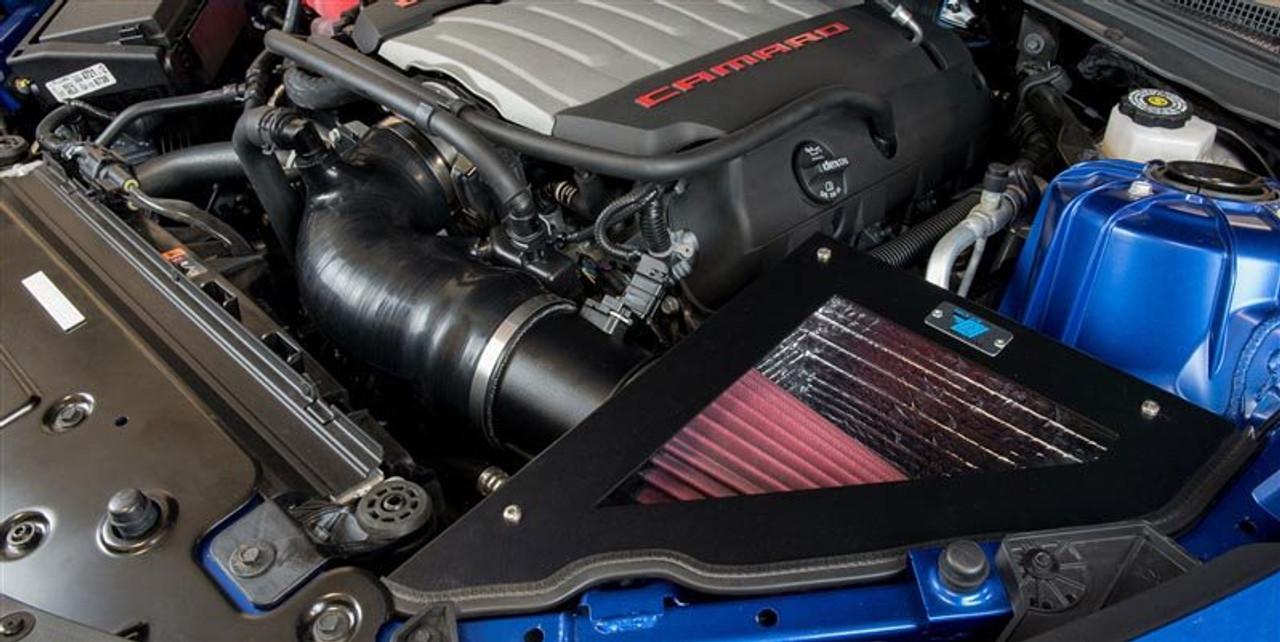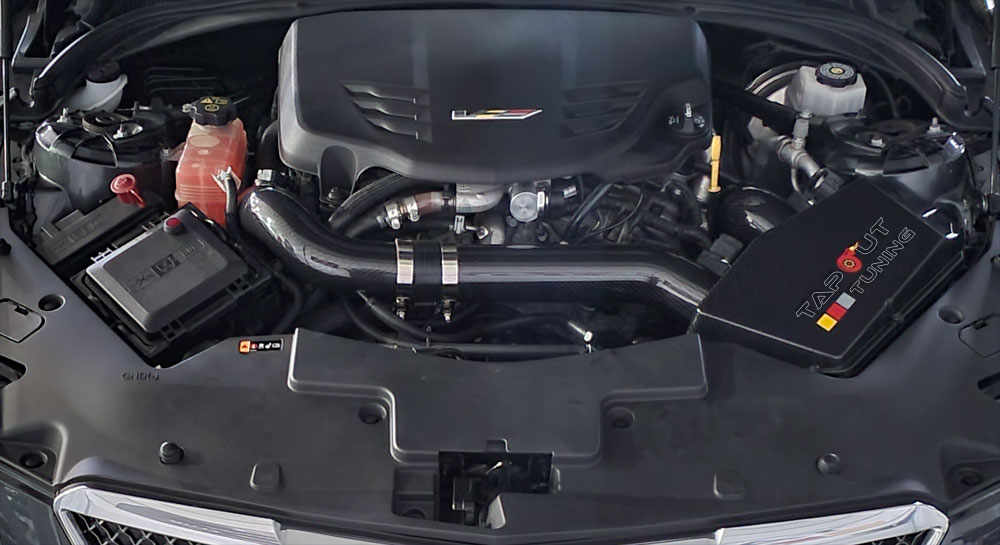How Much Horsepower Can Cold Air Intake ad?
A cold air intake is a popular upgrade for car enthusiasts looking to improve their vehicle’s performance and horsepower increase. Many people wonder how much horsepower a cold air intake will add to their car’s engine. The answer varies depending on the make and model of the car, as well as the type of cold air intake installed. Today we will find out- does cold air intake increase horsepower?
A cold air intake works by increasing the amount of cool, dense air that enters the engine. This can improve the engine’s combustion process, resulting in increased horsepower and torque. However, the amount of horsepower added by a cold air intake can vary greatly based on several factors. These factors include the make and model of the car, the size and type of engine, and the specific cold air intake model installed.

Key Takeaways
- A cold air intake can improve a car’s performance by increasing horsepower and torque.
- How much horsepower will a cold air intake add varies depending on several factors, including the make and model of the car and the specific cold air intake model installed.
- Proper installation and maintenance of a cold air intake is important for optimal performance and efficiency.
What is a Cold Air Intake?
A cold air intake is an aftermarket modification that replaces the stock air intake system in a car’s engine. The purpose of a cold air intake is to increase the flow of oxygen-rich, cool air into the engine, which in turn can improve the engine’s performance.
The stock air intake system in most cars is designed to be quiet and efficient, but it can also be restrictive. A cold air intake, on the other hand, is designed to be less restrictive, allowing more air to flow into the engine. This increased airflow can help to improve the engine’s horsepower and torque.
A cold air intake typically consists of a high-flow air filter, a larger diameter intake tube, and a heat shield. The high-flow air filter is designed to allow more air to flow into the engine, while the larger diameter intake tube helps to reduce air resistance and increase airflow. The heat shield is designed to protect the air filter from hot air in the engine bay, which can reduce performance.
Overall, a cold air intake can be a worthwhile upgrade for car enthusiasts looking to improve their engine’s performance. However, it’s important to note that the benefits of a cold air intake can vary depending on the car model and engine. Larger and turbocharged engines will often see the most improvement from installing a cold air intake, while smaller non-turbocharged engines may not see a noticeable performance change.

How Does a Cold Air Intake Work?
A cold air intake is an aftermarket modification that replaces the factory air intake system in a vehicle. The purpose of a cold air intake is to increase the amount of cool, dense air that enters the engine’s combustion chamber. This can lead to an increase in horsepower and torque, as well as improved fuel efficiency.
The factory air intake system in most vehicles is designed to minimize noise and maximize convenience, rather than performance. This means that the air filter and air intake tubing are often restrictive and inefficient. A cold air intake, on the other hand, is designed to be less restrictive and more efficient, allowing more air to flow into the engine.
The key to a cold air intake’s performance benefits is the intake of cool, dense air. Cooler air is denser than warmer air, which means that it contains more oxygen molecules per unit of volume. This increased oxygen content allows for more complete combustion of the fuel in the engine’s combustion chamber, which can lead to increased horsepower and torque.
A cold air intake achieves this by positioning the air filter and air intake tubing in a location where it can draw in cooler air. This can be achieved in a number of ways, depending on the vehicle. Some cold air intakes position the air filter in the fender well, where it can draw in cooler outside air. Others use a heat shield to isolate the air filter from the hot air in the engine bay.
Overall, a cold air intake works by increasing the amount of cool, dense air that enters the engine’s combustion chamber. This can lead to improved performance and fuel efficiency, making it a popular modification among car enthusiasts.
Cold Air Intake and Horsepower Increase: does a cold air intake increase hp?

Installing a cold air intake is a common modification among car enthusiasts looking to improve their engine’s performance. The question is, does cold air intake add horsepower and how much horsepower can it give to your engine? The answer depends on several factors, including the make and model of your car, the condition of your engine, and the size of your engine.
According to Mechanic Base, a cold air intake can improve your engine’s performance by 0 to 20 horsepower, depending on the car model and engine. Larger and turbocharged engines will often see the most significant improvement from installing a cold air intake. In contrast, smaller non-turbocharged engines will most likely not see a noticeable performance change by installing a cold air intake.
HowStuffWorks explains that redirecting the filter to draw cooler air can provide a horsepower gain of about 5 to 20 ponies in most cars. It may even improve your fuel efficiency and make your engine sound better.
Auto Chimps notes that a cold air intake is popular among car modifiers and boy racers. They are the ultimate picture of Fast and Furious-esque speed and power. Cold air intakes come in a variety of colors, including plain black, and can add a sporty look to your engine bay.
It’s essential to note that a cold air intake alone will not magically turn your car into a high-performance machine. It’s just one of many modifications you can make to improve your engine’s performance. Additionally, if you install a cold air intake, you should regularly clean the filter to prevent any issues with the cold air intake.
In summary, a cold air intake can add anywhere from 0 to 20 horsepower to your engine, depending on several factors. Larger and turbocharged engines will see the most significant improvement, while smaller non-turbocharged engines may not see a noticeable change. A cold air intake is just one of many modifications you can make to improve your engine’s performance, and it’s essential to regularly clean the filter to prevent any issues.
Factors Affecting Horsepower Increase
Installing a cold air intake can potentially increase horsepower, but there are several factors that can affect the amount of increase.
Make and Model
Different makes and models of vehicles have different engine designs and specifications. Some vehicles may see a greater increase in horsepower with a cold air intake than others. For example, larger engines and turbocharged engines may see a more significant increase in horsepower than smaller, non-turbocharged engines.
Engine Condition
The condition of the engine can also affect the amount of horsepower increase. If the engine is old and worn out, a cold air intake may not provide as much of an increase in horsepower as it would in a newer, well-maintained engine.
Engine Size and Cylinders
The size of the engine and the number of cylinders can also play a role in the amount of horsepower increase. Generally, larger engines with more cylinders will see a greater increase in horsepower with a cold air intake than smaller engines with fewer cylinders.
Other Factors
Other factors that can affect the amount of horsepower increase include the type of cold air intake being installed, the quality of the installation, and the tuning of the engine’s electronic control unit (ECU). It is recommended to have the ECU recalibrated to fully leverage the benefits of a cold air intake.
In summary, while a cold air intake can potentially increase horsepower, the amount of increase can vary depending on several factors such as the make and model of the vehicle, the engine condition, and the size and cylinders of the engine.
Cold Air Intake Models for Horsepower increase
There are a variety of cold air intake models available on the market today, each with its own unique features and benefits. Some popular models include K&N, aftermarket intakes, and stock intakes.
K&N cold air intakes are known for their high-quality construction and superior performance. They are designed to increase horsepower and acceleration while providing excellent filtration. K&N cold air intakes are also washable and reusable, making them a cost-effective choice for car enthusiasts.
Aftermarket cold air intakes are another popular option for those looking to increase horsepower. These intakes are designed to be a direct replacement for the factory air intake system and are often less expensive than K&N cold air intakes. However, it’s important to note that not all aftermarket intakes are created equal, and some may not provide the same level of performance as K&N or other high-end brands.
Stock intakes, on the other hand, are the air intake systems that come standard with your vehicle. While they may not provide the same level of performance as aftermarket or K&N cold air intakes, they are still a viable option for those looking to upgrade their engine’s performance without breaking the bank.
Ultimately, the best cold air intake for your vehicle will depend on your specific needs and budget. It’s important to do your research and choose a reputable brand that will provide the performance and filtration you need.
Related Posts:
Installation and Maintenance
Installing a cold air intake is a relatively simple modification that can be done with basic tools and a little bit of know-how. However, it is important to follow the manufacturer’s instructions carefully to ensure proper installation and avoid any damage to the engine.
One of the most important aspects of installing a cold air intake is choosing the right location for it in the engine bay. The intake should be placed in an area where it can draw in cool, fresh air, away from any sources of heat or hot engine components. This will help to maximize its performance and ensure that the engine is getting the coolest air possible.
Once the location has been determined, the old air intake system must be removed and the new one installed in its place. This typically involves removing the air filter box and replacing it with the new cold air intake, which may require some modification to the existing components.
After installation, it is important to regularly maintain the cold air intake to ensure that it continues to function properly. This includes cleaning the air filter regularly to remove any dirt or debris that may have accumulated, as well as checking the connections and clamps to make sure they are tight and secure.
Overall, a cold air intake can be a great addition to any vehicle, providing improved performance and a more aggressive engine sound. With proper installation and maintenance, it can be a reliable and long-lasting modification that will continue to deliver results for years to come.
Cost and Investment

Installing a cold air intake is a popular modification for car enthusiasts looking to add some horsepower to their engine. However, before making the investment, it is important to consider the cost and potential benefits.
The cost of a cold air intake can vary depending on the make and model of the car, as well as the brand of the intake. On average, a cold air intake can cost anywhere from $100 to $500. While this may seem like a significant investment, it is important to consider the potential benefits.
A cold air intake can improve the performance of a car by increasing horsepower and torque. This is achieved by allowing more cool air to flow into the engine, which can result in a more efficient combustion process. This increase in efficiency can lead to improved fuel economy as well.
In addition to the potential performance benefits, a cold air intake can also enhance the appearance of a car. Many cold air intakes come in a variety of colors and designs, allowing car enthusiasts to customize their engine bay to their liking.
Overall, while the cost of a cold air intake may seem significant, it can be a worthwhile investment for those looking to improve the performance and appearance of their car. However, it is important to do research and choose a reputable brand to ensure the best possible results.
Performance and Efficiency
A cold air intake can improve the performance of an engine by increasing horsepower and torque. The amount of horsepower gained depends on the car model and engine. Large and turbocharged engines will often see the most improvement from installing a cold air intake. According to Mechanic Base, a cold air intake can improve engine performance by 0 to 20 horsepower.
In addition to improving performance, a cold air intake can also increase efficiency. By allowing more air into the engine, a cold air intake can improve combustion and increase power output. This can lead to better acceleration and overall performance. According to Autochimps, a cold air intake can add around 5-10 horsepower to a vehicle’s engine.
The type of filter used in a cold air intake can also affect performance and efficiency. A high-quality filter can improve airflow and increase horsepower, while a low-quality filter can restrict airflow and decrease performance. It is important to choose a filter that is designed for the specific make and model of the vehicle.
It is important to note that installing a cold air intake may not always improve fuel economy. In some cases, it may actually decrease fuel economy. This is because the increased airflow can cause the engine to burn more fuel. However, in certain situations, a cold air intake can improve fuel economy by allowing the engine to operate more efficiently.
Overall, a cold air intake can be a worthwhile investment for those looking to improve the performance and efficiency of their vehicle. It is important to choose a high-quality filter and to carefully consider the potential effects on fuel economy before making a purchase.
Sound and Aesthetics
In addition to improving engine performance, a cold air intake can also enhance the sound and aesthetics of a vehicle. The sound produced by a cold air intake is often deeper and more aggressive than the stock air intake system. This is due to the increased airflow and the design of the cold air intake system.
Car enthusiasts often appreciate the sound produced by a cold air intake, as it can make the vehicle sound more powerful and sporty. However, it is important to note that not all cold air intake systems produce the same sound. The sound produced by a cold air intake can vary depending on the make and model of the vehicle, as well as the design of the cold air intake system itself.
In terms of aesthetics, a cold air intake can also add a visual appeal to a vehicle. Many cold air intake systems are designed to be more visually appealing than the stock air intake system. They often feature a polished or powder-coated finish, and some even have a clear window that allows you to see the air filter.
It is important to note that while a cold air intake can enhance the sound and aesthetics of a vehicle, these benefits are purely cosmetic and do not necessarily improve the performance of the vehicle.
Related Posts:
Potential Issues and Signs
While a cold air intake can increase horsepower and improve engine performance, there are some potential issues to be aware of.
One common issue is the check engine light coming on. This can happen if the cold air intake is not properly installed or if it causes the air/fuel mixture to become too lean. If the check engine light comes on after installing a cold air intake, it’s important to have the vehicle’s computer system scanned for error codes to determine the cause of the problem.
Another issue that can arise is a decrease in throttle response. This can happen if the cold air intake is not designed specifically for the make and model of the vehicle. In some cases, a poorly designed cold air intake can actually reduce airflow to the engine, resulting in a decrease in throttle response and overall performance.
It’s also important to note that a cold air intake may not provide a noticeable increase in horsepower on all vehicles. The amount of horsepower gained can vary depending on the make and model of the vehicle, as well as other factors such as the age of the engine and the condition of other components.
In addition, some cold air intakes can be quite loud, which may be a concern for some drivers. This is due to the increased airflow and the sound of the air rushing into the engine. While some drivers may enjoy the added sound, others may find it distracting or annoying.
Overall, while a cold air intake can provide a noticeable increase in horsepower and improve engine performance, it’s important to be aware of the potential issues and to ensure that the cold air intake is properly installed and designed for the specific make and model of the vehicle.
Conclusion about horsepower increase and cold air
In summary, installing a cold air intake can potentially boost your engine’s horsepower, adding anywhere from 0 to 20 HP depending on the specific make and model of your vehicle. Turbocharged and larger engines often benefit the most, experiencing a more significant increase in horsepower. On the other hand, smaller, non-turbocharged engines may not see a noticeable change in performance.
By enhancing air flow into the engine, a cold air intake optimizes combustion, thereby increasing power output. This leads to questions like “how much HP does a cold air intake add?” or “how much horsepower does a cold air intake add?” The answer varies based on several factors, including the quality of the cold air intake system, the material used for the piping, and the placement of the filter element.
Additionally, a well-installed cold air intake can also improve fuel efficiency and produce a more satisfying engine sound. However, proper installation and maintenance are crucial to avoid any potential complications.
If you’re considering ways to enhance your vehicle’s performance, a cold air intake could be a viable option. But it’s essential to conduct thorough research and select a high-quality system that’s compatible with your car’s specifications.
We hope that in this post we answered to question- does cold air intake add hp.





[…] How Much Horsepower Does a Cold Air Intake Add to a 6.0 Vortec? […]
[…] Cold air intake – freer flowing intake pipe and air filter […]
[…] air restriction so more air can flow into the engine, resulting in better throttle response and horsepower gains. There are two main types – short ram intakes and cold air intakes. So which one provides the […]
[…] Cold Air Intake Horsepower Increase […]